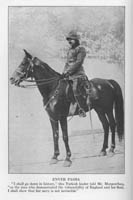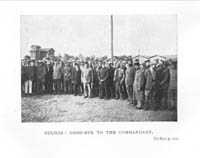Table of Contents
Media Index
CHAPTER 15
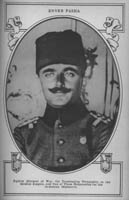
Portrait of Enver Pasha (1881-1922), one of the three major leaders of the Young Turk Movement and served as the Turkish Minnister of War during the First World War.
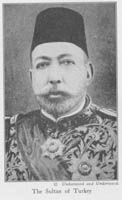
Official photograph of Sultan Mohammad V of the Ottoman Empire (1844-1918), who ruled Turkey from 1909 to 1918.
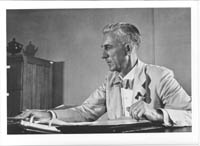
Photogrtaph of Darius A. Davis (1883-1970) working at his desk; Davis became the Senior American YMCA Secretary in France after the United States declared war against Germany in April 1917.
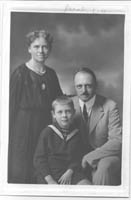
Ernst Offo Jacob (1886-1966) poses in a family photograph with his wife, Sarah, and his son, Philip. Jacob first served as a YMCA secretary in Constantinople from 1910 to 1916 before he transferred to Germany to serve as an American YMCA WPA Secretary in Saxony. This photograph was a Christmas greeting card in 1922 and was taken when Jacob was the General Secretary of the Athens Association.
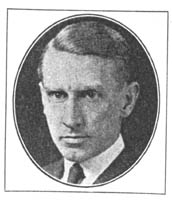
Owen Pence (1887-1967) was an American YMCA secretary assigned to work at Roberts College in Constantinople before World War I; he transferred to France in 1917 to work with the American Army.
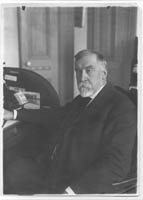
William Peet was an American missionary in Constantinople during World War I and served as the first Chairman and on the Board of Directors of the Constantinople YMCA. He was the Treasurer of the American Board of Foreign Missions in the Near East for over forty years.
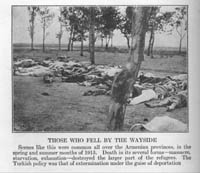
Dead Armenians lay beside a road, victims of the Turkish government's policy of genocide. During the Spring and Summer of 1915, the Turks implemented a deportation policy of the Armenian population by which the Turks marched civilians around in circles until they died of starvation, exposure, exhaustion, or, if all else failed, murder. The Turks sought to exterminate the Armenians from the empire.

Bones of Armenians massacred by the Turks are unearthed at Erzingan. These "relics" could be found all over Turkish Armenia as the result of the Ottoman government's policy of genocide.
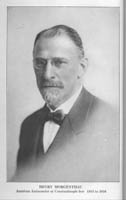
Henry Morgenthau (1856-1946) was the United States ambassador to the Ottoman Empire from 1913 to 1916.
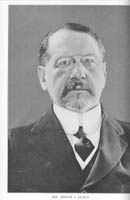
Photo of Abram Elkus (1867-1947), U.S. ambassador to the Ottoman Empire from 1916 to April 1917, when the United States broke diplomatic relations with Constantinople.

Wounded British prisoners sit in a hospital tent behind Turkish lines in Gallipoli during the Dardenelles campaign in 1915. The tent flaps are open to provide some ventillation for the POW's. Although the campaign was bloody, the Turks took relatively few prisoners during the battle.
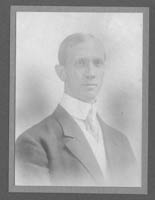
Portrait of Dirk Johannes Van Bommel, a Dutch national who worked for the American YMCA and served as secretary in the Constantinople YMCA; he supervised Allied POW relief operations in the Ottoman Empire.
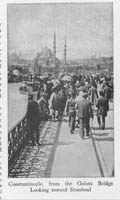
This photograph shows the city of Stamboul, including the Hagia Sophia, from the Galata Bridge. The Turks marched British prisoners captured at Gallipoli across this bridge in November 1915 to celebrate their victory against the Anglo-French assault on the Straits.

General Charles V. F. Townshend (1861-1924) commanded the Mesopotamia Expeditionary Force against the Turks in 1915. The Ottomans forced the British to retreat down the Tigris River to Kut-al-Amara, where the British surrendered in April 1916 after a long siege.
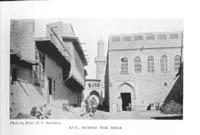
Photograph taken by Major Saunders of a street scene in Kut-al-Amara showing the minaret of the mosque during the Turkish siege of the city.
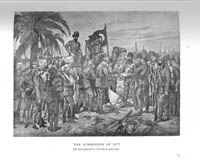
Imaginary German view of the surrender of the British at Kut-al-Amara in April 1916. British General Charles Townshend offers his sword to the Turkish commander, with the British flag on the ground in submission. British and Indian troops have begun the process of stacking their weapons on the ground. The city of Kut can be seen in the background.
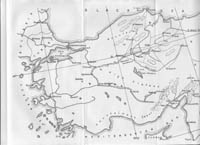
Map of the route British and Indian POW's traveled into captivity in Asia Minor. The appalling fatality rate of the British and Indian prisoners during this transit was referred to as the "Kut Death March" in the British press.
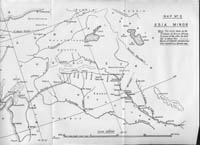
Map of the route British and Indian POW's traveled into captivity in Asia Minor. The appalling fatality rate of the British and Indian prisoners during this transit was referred to as the "Kut Death March" in the British press.

The Germans enjoyed the British surrender to their Turkish allies at Kut-al-Amara in April 1916. This cartoon shows a Turkish soldier holding a triumphant Turkish flag, while a wounded British lion limps away in bandages. The Turk is depicted as the "lion tamer," reflecting the second major British deferat in the Near East (after the Gallipoli debacle ended in January).

General view of the city of Kut-al-Amara where 8,070 British and Indian troops on the verge of starvation surrendered to Turkish forces in April 1916. The loss of this Anglo-Indian force was a major Allied defeat in Mesopotamia and provided the Turks with a large influx of prisoners.
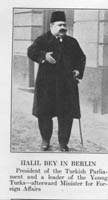
Halil Bey was the Turkish Foreign Minister during the First World War and negotiated with Christian Phildius regarding World's Alliance access to Allied POW's in the Ottoman Empire.
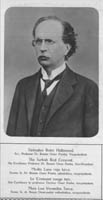
Bessim Omer Pasha was the Vice President of the Red Crescent Society in the Ottoman Empire during World War I.

View of the Cilician Gates looking north, showing the stream and road bed for the Berlin to Baghdad Railway. Allied prisoners provided the labor force for the construction of this railway line through this Taurus Mountains pass. Although Allied prisoners were slow workers and resorted to sabotage whenever possible, the Turks still preferred POW labor for their railroad construction projects rather than employing local workers.

View of the Sinope-Kastamuni Road, a project constructed by Allied POW labor, probably from the prison camp at Kastamuni. Although slow and accident prone (in other words, skilled practioners of sabotage), the Turks preferred Allied prisoner labor for their road and railroad construction projects.

Portrait of Frederic Courtland Penfield (1855-1922), United States ambassador to Austria-Hungary from 1913 to 1917, writing at his desk.
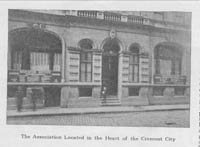
Exterior view of the Association building in Constantinople where Van Bommel prepared parcels for Allied prisoners of war in Turkish prisons. During the war, the YMCA building became a warehouse for relief work for Allied POW's.

British officers, on an excursion with their dogs from the prison camp at Afion Karahissar, pose for a photograph. They are wearing civilian clothing and the mountain that marks the city stands in the background. These POW's lived in the lower camp at Afion Karahissar.
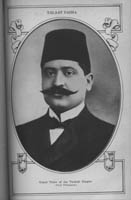
Portrait of Mehmet Talaat Pasha (1874-1921),Young Turk leader and Minister of the Interior during the Great War, he was responsible for the massacre of the Armenians in 1915. Talaat became the Grand Vizier in February 1917, a position he would hold until his resignation in October 1918 when Turkey signed an armistice with the Allies.
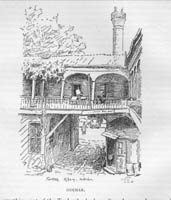
A British prisoner drew this picture of a two-story house, known as the "Turkish Khan," where the Turks incarcerated British POW's in Ouchak. A minaret of the mosque stands in the background of the drawing.
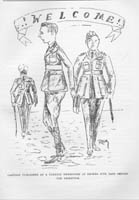
This cartoon appeared in a Smyrna newspaper in October 1918, five days before the Turks signed an armistice with the Allies, which ended the Ottoman Empire's participation in World War I. The newspaper welcomes British and Indian prisoners from the interior of Anatolia to the city. Smyrna served as the repatriation center for British and Indian POW's at the end of the war.
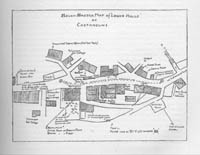
This map of the prison facilities at Kastamuni shows where the Turks incarcerated British prisoners in the Lower House camp. The prisoners had access to a chapel, library, restaurant, badmitton court, and soccer field, in addition ot the quarters and messes where they lived and ate. After an escape, the Turks severely limited the prisoners' freedom and privileges in the town.
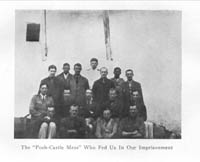
Members of the "Posh-Castle" Mess pose for this group photograph at Yozgad. The members of the mess shared their provisions and cooking duties to improve their diet while under Turkish captivity.
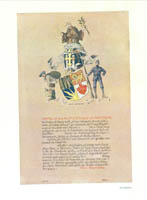
British prisoners, captured at Kut-al-Amara, designed this coat of arms for the prison camp at Kastamuni. The arms are divided into four quarters: the upper left quarter shows a veil covering pain and agony; the upper right depicts an English lion enchained on a blood red field; the lower right has a rising sun signifying the dawn of hope; and the lower right employs a cross and crescent joined in charity. A prisoner overladen with bread and other wares is at the left, while a Turkish guard stands to the right. St. Bruno is situated above the arms, making the sign of patience with his right hand and holding an olive branch in his left. The camp's motto is "Hope, Brothers!"
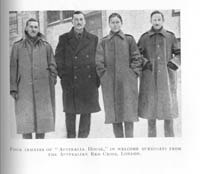
Four prisoners of war received these overcoats from the Australian Red Cross, based in London. They are standing outside Australia House in the Armenian Quarter of Afion Karahissar. The winters in Asia Minor were very cold during the winter and the overcoats were essential equipment for prisoners.
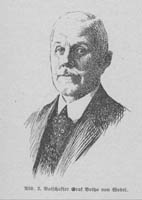
Graf Botho von Wedel was the German ambassador to Austria-Hungary during World War I and supported the YMCA's efforts to begin WPA operations in the Ottoman Empire.
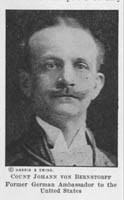
Count Johann-Heinrich von Bernstorff (1862-1939), German ambassador to the United States until February 1917, when the Wilson administration severed diplomatic relations with Germany, and resassigned as the German ambassador to the Ottoman Empire.
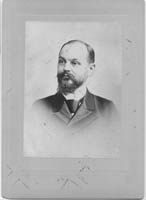
Photograph of Christian Phildius (d. 1937), first General Secretary of the German National YMCA who later became the General Secretary of the World's Alliance from 1896 to 1922; he conducted negotiations to establish WPA programs in Austria-Hungary, Bulgaria, and Turkey during the war.
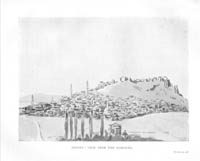
View of the city of Angora, drawn by a British prisoner of war from his barracks. He depicts the city and the citadel on the top of the hill.
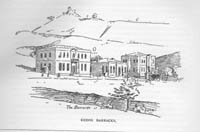
Drawing of the prisoners' barracks at the prison camp in Kedos. British POW's lived in three stone buildings; two two-story buildings and a one-story barrack.
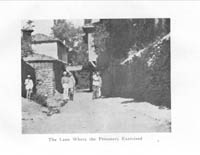
British prisoners of war exercise and get some fresh air on a street in Yozgad, near their quarters. The Turks incarcerated British POW's in houses in this city.
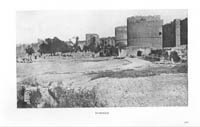
Exterior view of the citadel at Diarbekr showing of the gates. The Turks incarcerated British prisoners in the Citadel during the war.
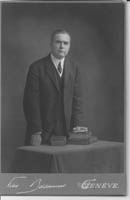
Portrait of John R. Mott, General Secretary of the Inernational Committee of the North American YMCA; Christian Phildius pressed Mott for American funding to support WPA operations in the Ottoman Empire. While the American Association was willing to extend financial support, Phildius was unable to secure official approval from Ottoman authorities until the end of the war.
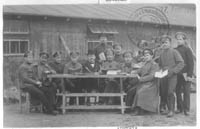
Max Rieser, a Swiss YMCA secretary who volunteered to support WPA operations in Austria-Hungary after the departure of the American secretaries in 1917, sits at the center of a table (in civilian clothing and bowler hat) surrounded by Russian prisoners of war at Reichenberg in Bohemia. Christian Phildius recommended that Rieser serve as the WPA Secretary for Allied POW's in the Ottoman Empire because of his language abilities.
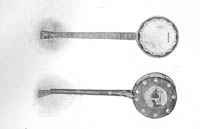
This photograph shows the front and back of a banjo made by a British prisoner of war during his incarceration in a Turkish prison camp. The back of the banjo features a picture of a mosque and minaret and has crescent moon and star decorations. Musical instruments were a critical source of entertainment for POW's.
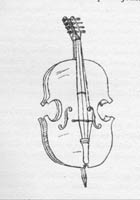
A British prisoners of war made this cello during his incarceration in a Turkish prison camp. Through the prisoners' ingenuity and skill, craftsmen in the camps could make musical instruments for bands and orchestras and musicians could then offer the POW's entertainment.
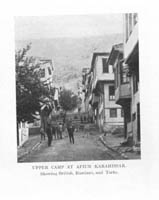
The Turks incarcerated Allied prisoners in houses on this street near the foot of the mountain at Afion Karahissar. In this photograph, British and Russian POW's stand in the street in front of their accommodations with Turkish guards.
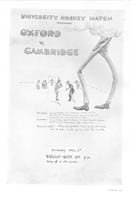
This poster promotes a field hockey match between players from Oxford University and Cambridge University. The artist pokes fun at some of the intellectuals in the prison camp at Kedos, who are slowing up the start of the match.
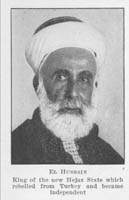
King Hussein ibn Ali of the Hejaz (c. 1854-1931) led the Arab Revolt against Turkish rule and became the first king of the Hejaz.
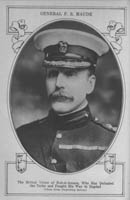
Portrait of General Sir Frederick Stanley Maude (1884-1917); he replaced General Charles Townshend in command of the Mesopotamia Expeditionary Force in 1916, after the latter's surrender at Kut-al-Amara, and resumed the British offensive up the Tigris River. Maude recaptured Kut in February 1917 and seized Baghdad in March, but died of cholera in November 1917.
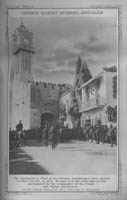
Field Marshall Edmund H.H. Allenby of the British army (1861-1936) enters Jerusalem on foot, leading the Allied contingent in December 1917. The British considered their offensive in Palestine as another crusade and rather than entering Jerusalem as a conqueror on horse, Allenby walked into the city in recognition of Christ's triumphant entry on an ass.

Portrait of David Lloyd George (1863-1945), Prime Minister of the British War Cabinet during the Great War.
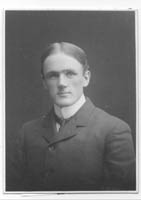
Photograph of a younger Robert Ewing (1878-1934), he supervised WPA operations in England early in the war and became the Senior American YMCA Secretary in Britain when the United States declared war on Germany in April 1917.
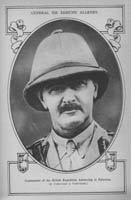
Photograph of Field Marshall Edmund H.H. Allenby of the British army (1861-1936) during his offensive against the Turks on the Palestine Front.
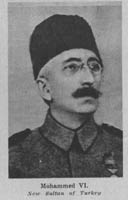
Photograph of Sultan Mohammad VI of the Ottoman Empire (1861-1926) in his military uniform; he was the last Ottoman emperor and abdicated his throne in 1922.
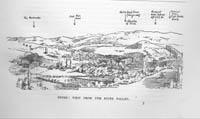
General view of the town of Kedos and several of the prison camp buildings after the great fire. The prison barracks where many of the British prisoners lived is in the center to the left; the Gurkha mess is next to the large building to the center rights; and the Indian officers' quarters are next to the minaret at the right.
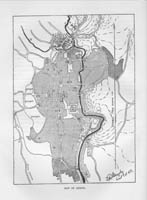
This map shows the extent of the destruction of the great fire at Kedos as well as the locations of many of the buildings associated with the prison camp.
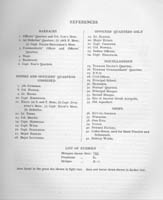
Key to the map of the prison facilities at Kedos, this index identifies the POW barracks, messes, officers' quarters, shops, and miscellaneous buildings.
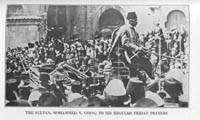
Sultan Mohammad V of the Ottoman Empire (1844-1918) rides through a crowd in an open carriage on his way to the mosque.
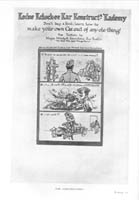
This poster promotes classes at the prison camp at Kedos. Major Saunders, a British officer incarcerated at Kedos, taught prisoners how to build automobiles at the Kchock-ee Kar Konstruction Kademy.

This poster advertises three theatrical performances which were presented on August 19, 1918 in the prison camp at Kedos. The show included "Doctor's Order," a comedy; "The Monkey's Paw," a drama; and "The Bride," a farce.
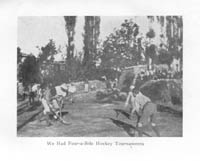
British prisoners chase the ball during a field hockey match at Yozgad. Spectators enjoy the tournament from the sidelines.
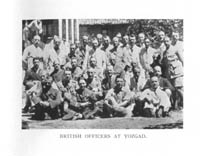
This group photograph shows British officers incarcerated by the Turks at Yozgad. Many of these officers are wearing civilian clothing, while others are still in military uniform.
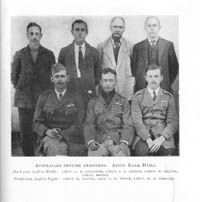
Seven Australian officers incarcerated at Afion Karahissar pose for a photograph. The three seated POW's are members of the Royal Flying Corps and are dressed in their uniforms; the other four standing behind them are wearing civilian clothing. There are six lieutenants and a captain in this picture.
